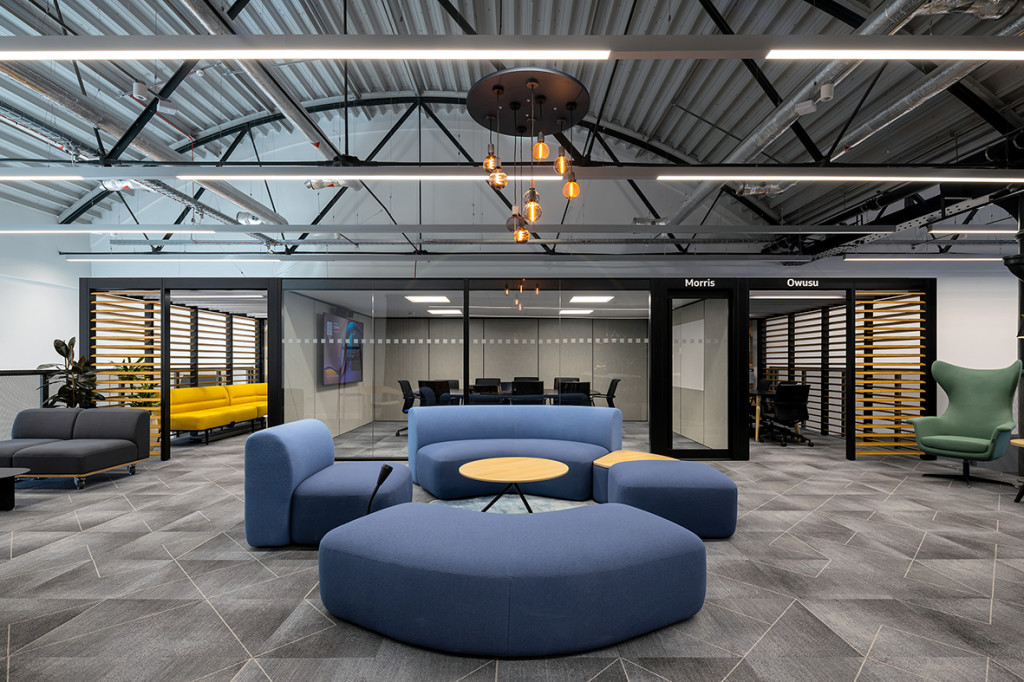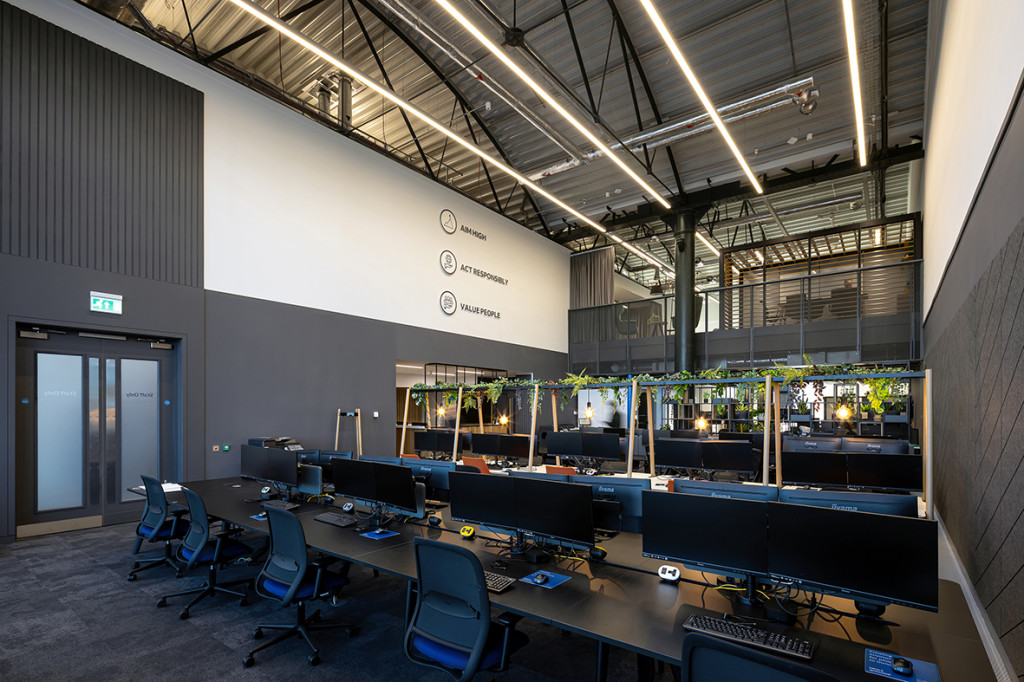Navigating complexity: Delivering fit-out projects in operational environments

Delivering a successful office fit-out in the midst of a live, operational building is a challenge that requires a deep understanding of logistics, programme agility and technical expertise. From healthcare to aviation and education, maintaining business-as-usual while introducing modern, efficient and low carbon spaces is fast becoming the new standard. Here, Gordon Clyne, Joint Managing Director at Morris & Spottiswood, explores the key elements of delivering office fit-outs within an operational environment.
In any fit-out project, the importance of logistics cannot be overstated, but this becomes even more integral when the building is remaining occupied and operational throughout the construction phases. This additional complexity means that a robust pre-construction phase is essential. Site access, noise management and waste handling are just a few of the factors that must be addressed in detail from the outset. Early collaboration with facilities management (FM) teams ensures critical operational concerns are embedded into the construction programme, with phasing and sequencing aligned to minimise disruption.
In addition to the logistics, site safety in live buildings is a key consideration. Segregated work areas, clearly defined routes and detailed risk assessments are fundamental, particularly in environments such as healthcare, where air quality and infection control are vital.
In retrofit projects involving older buildings, detailed surveys are also necessary to identify any potential legacy hazards, such as asbestos or lead based paint. Live settings require an agile safety approach that can respond dynamically to changing site conditions and user interactions.
Access presents another challenge, and fit-outs must often be executed around strict building usage schedules, with limited working windows and shared infrastructure. A phased approach, carefully aligned with the client’s operational patterns, becomes essential to ensure productivity without overstepping boundaries.
Modular systems
One of the most effective tools for overcoming the constraints of live environments is the use of modular or off-site construction techniques. Modular systems, such as prefabricated ‘plug and play’ pods, can be manufactured in a controlled environment, with integrated lighting, cabling and ventilation, and rapidly installed on-site. This dramatically reduces site time, waste and disruption, while offering high-quality finishes and carbon savings.
A recent Morris & Spottiswood office fit-out in Glasgow achieved an upfront embodied carbon figure of just 93kgCO2e/m2, which was comfortably below the 2025 threshold set in the UK Net Zero Carbon Building Standard, and is already below the 2038 target of 100kgCO2e/m2, in 2025, thanks in large part to modular design and circular economy principles.
One of the most important benefits of modular building is the ability to pre-plan, fabricate and assemble with precision, which not only accelerates delivery but ensures greater accuracy in achieving environmental performance goals, particularly when combined with Lifecycle Carbon Assessments and operational energy optimisation strategies.
Indeed, environmental sustainability targets are of growing importance and there is an opportunity at fit-out stage to reduce both the operation and embodied carbon of a project.
Whether through reused materials, operationally efficient M&E systems or passive energy improvements, the goal is to improve the environmental performance of the building.

Designing with flexibility in mind also adds value, with demountable partitions and modular components not only supporting future adaptability, but that align with circular economy models, reducing whole-life carbon impacts and extending the utility of materials.
Early collaborations
For these complex, live environment fit-outs, early collaboration and contractor involvement is crucial. When M&E, flooring, architectural, FF&E and carbon experts work as a cohesive unit from day one, issues are pre-empted rather than reacted to. Shared platforms,
single-point accountability and unified standards create a ‘golden thread’ of information across the project lifecycle. This reduces risk, enhances clarity and delivers better outcomes across timescale, budget and performance.
Such integration is particularly important when design intent must remain intact through installation, whether that’s maintaining acoustic performance, ensuring proper airflow or embedding brand identity into functional spaces.
Complex fit-out projects in operational buildings are becoming incredibly common, as businesses look to reduce downtime. Couple this with an increasing focus on reducing carbon and accelerating delivery, the traditional construction playbook is no longer enough.
Success hinges on early planning, clear communication, modular thinking and integrated teams that understand not just how to build, but how to do so intelligently and sustainably.
For those responsible for delivering and managing these spaces, the right partner is one who understands the building as a living environment, not just a construction site.







